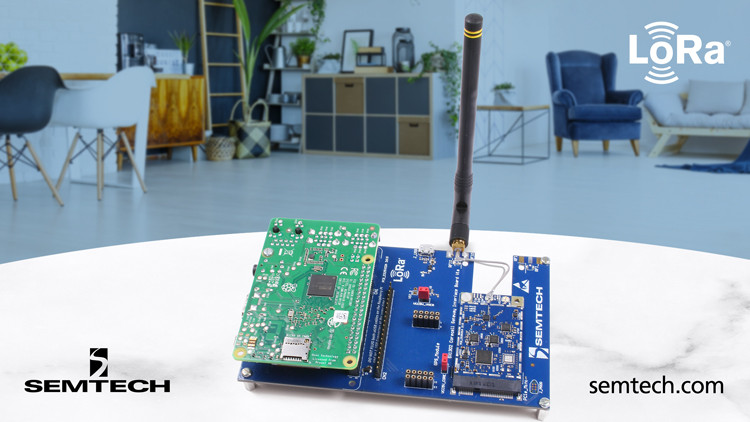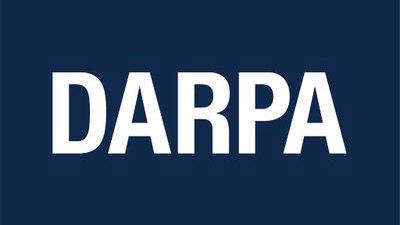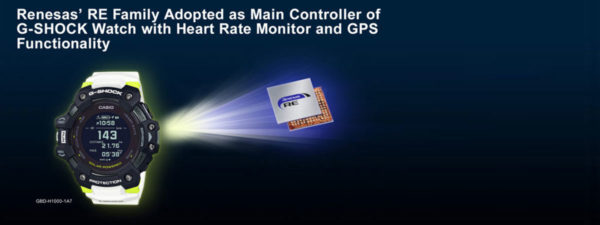Semtech announced Wednesday general availability of the LoRa Corecell reference design for indoor gateway applications. The reference design is developed to the LoRaWAN protocol and targeted for home, building and factory automations.
The LoRa Corecell reference design provides the “minimum optimized solution” to build a gateway application, which is represented in the name, “core” and “cell.” The reference design is comprised of two new integrated circuits (ICs), LoRa-based gateway baseband transceiver (SX1302) and the low power multi-band Sub-GHz RF Front End (SX1250), enabling customers to deploy cost-effective indoor gateway solutions. The ICs are designed to reduce power consumption up to one tenth the power of legacy products, enabling power constrained USB-based gateways and mobile battery operated gateways.

These products allow for bill of materials (BOM) cost reduction, provide a small package form factor while increasing performance based on a larger number of modulators and demodulators. In addition, spreading factor five and spreading factor six were added to support higher data rates, reducing time on air and power consumption.
Semtech’s LoRa devices are widely adopted long-range, low-power solutions for IoT that gives telecom companies, IoT application makers and system integrators the feature set necessary to deploy low-cost, interoperable IoT networks, gateways, sensors, module products, and IoT services worldwide. IoT networks based on the LoRaWAN protocol have been deployed in 100 countries and Semtech is a founding member of the LoRa Alliance, the fastest growing IoT Alliance for Low Power Wide Area Network applications
LoRa-based Gateway Baseband Transceiver (SX1302) includes LoRaWAN Class A/B/C, all regions; 125 kHz LoRa reception with 8 x 8 channels LoRa packet detectors, 8 x SF5-SF12 LoRa demodulators, 8 x SF5-SF10 LoRa demodulators, and 125 /250 / 500 kHz LoRa demodulator; and (G)FSK demodulator with direct interface to Semtech transceivers. It also features multi-band sub-GHz radio frequency front end (SX1250) that offers +22dBm output power, lower UHF bands 169 and 433 or 490 MHz, North America 915 MHz, Europe 868 MHz and 24 QFN (4mmx4mm).
“The LoRa Corecell reference design’s key features, including low power, smaller package and higher integration with improved performance, aim to eliminate design complexity and accelerate time-to-market in the smart home and building industries,” said Pedro Pachuca, director of IoT for Semtech’s Wireless and Sensing Products Group. “As we announced earlier this year, Semtech is committed to developing a LoRa product roadmap that simplifies Internet of Things (IoT) applications that enable a faster time-to-market for IoT solution providers and systems integrators. This new reference design is key to our LoRa offerings as more real estate and commercial managers, as well as consumers, look for solutions that solve their daily challenges, such as meeting room occupancy and temperature/humidity monitoring.”
Semtech had earlier this year launched a robust platform of new LoRa-based solutions: developer building blocks, cloud services and manageable hardware. Underscoring its commitment to connecting tomorrow’s Internet of Things (IoT) solutions, Semtech is offering a complete bundle of development accelerators that streamline and simplify the process of developing, deploying and managing LoRa-based IoT applications.

In the fast moving technology world, the ability to rapidly identify and respond to customers’ needs for the operational, process and return on investment (ROI) improvements that IoT solutions can deliver is critical to the success of both solution developers and systems integrators.
Recent advances in IoT cloud platforms have done much to simplify the process of building IoT applications and advanced analytics once the data needed is “in the Cloud,” but the process of connecting both legacy and new edge devices to securely ingest that data remains challenging. In addition, IoT innovators face problems bridging the gap to a mature solution with a variety of choices for edge connectivity, complicated by fragmented ecosystems and solutions that target only the most battle-hardened hardware design teams.




